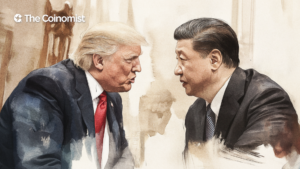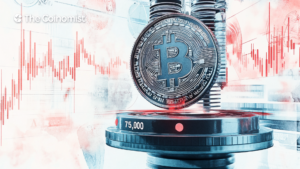
Smart homes continue to evolve as blockchain and the Internet of Things (IoT) reshape modern living, making homes more secure and self-sufficient. Learn how these systems differ from earlier versions and explore real-world use cases.

Smart homes continue to evolve as blockchain and the Internet of Things (IoT) reshape modern living, making homes more secure and self-sufficient. Learn how these systems differ from earlier versions and explore real-world use cases.

Bitcoin Travel, a company officially registered in El Salvador, has launched as the world’s first online travel agency (OTA) to accept Bitcoin as its exclusive payment method.

Japan combines advanced technology with deep-rooted tradition, emerging as a crypto industry leader in East Asia. Find out why Tokyo is a hotspot for crypto enthusiasts and what expats should know to settle in.

Beyond charts and profit margins, сrypto trading affects how we connect with others. And the damage is often harder to measure than portfolio losses.

Anthony Rong, Nvidia VP, shares why he believes HBAR and Verifiable Compute will redefine AI trust—from chip to chain—and what this shift means for the future of secure, decentralized intelligence.

With tariff pressure mounting between the U.S. and China, the crypto market senses opportunity. Bitcoin, once again, is emerging as a possible refuge from geopolitical shocks.

American Bitcoin, a new project led by Hut 8 and Eric Trump, aims to bring Bitcoin mining home. But with Trump-era tariffs looming, can ideology and infrastructure outpace geopolitical risk?

This guide explains open interest, a key metric in trading. Learn what OI is, how it works, and why it matters in futures, options, and crypto markets.

A comprehensive guide comparing hot and cold crypto wallets. Learn their key security features, convenience, and costs to decide which storage suits your digital assets.

Explore the key differences between Ethereum and Bitcoin—from their origins and technologies to their use cases and future potential. Gain a comprehensive understanding of both cryptocurrencies.

Japan combines advanced technology with deep-rooted tradition, emerging as a crypto industry leader in East Asia. Find out why Tokyo is a hotspot for crypto enthusiasts and what expats should know to settle in.

The S&P and Nasdaq are both down hard, recession chances hit 66%, and Trump’s tariff rhetoric is shaking markets. What’s fueling the fears — and how close are we to a full-blown downturn?

Beyond charts and profit margins, сrypto trading affects how we connect with others. And the damage is often harder to measure than portfolio losses.

Donald Trump’s tariff policy triggered another wave of crypto volatility—this time pushing prices up. Bitcoin is trading above $80,000, and the total crypto market cap has risen 5% in the past 24 hours.

Trade tariffs announced by Donald Trump have led to an economic slowdown, which some analysts compare to the crises of 2008 and 2020.

Today, crypto lawyer James Murphy, known as MetaLawMan on X, announced that he is suing the U.S. government over documents related to Satoshi Nakamoto’s identity.

Inside the Hyperliquid surge: from low-profile beginnings to billion-dollar trades—and the quiet fight for control over on-chain derivatives.

Bitcoin is attempting to stabilize above the key psychological level of $80,000, but lingering economic uncertainty, a broader downtrend, and waning ETF demand continue to limit a full recovery.

A 90-day delay in new U.S. tariffs unleashed bullish momentum across markets, propelling Bitcoin beyond the $83K threshold.

As U.S. tariffs on China rise, Bitcoin’s $75,000 level is under pressure once more.

Matvii Diadkov, founder of Bitmedia, shared with us in an exclusive interview his expert insights on Web3 adoption, impact of GameFi and community-centering tendencies in the market.

The first crypto craze took place almost a decade ago. Overnight, many people found out about Bitcoin and its underlying technology, blockchain.

Volodymyr Nosov, CEO of Europe’s largest crypto exchange WhiteBIT, sat down with Dmytro Gordon, one of Ukraine’s most prominent journalists. The interview touched on Bitcoin, crypto, WhiteBIT, cars, keys to success, and business vision.

This guide explains open interest, a key metric in trading. Learn what OI is, how it works, and why it matters in futures, options, and crypto markets.

GITEX, a major global tech event, expands to Asia in April 2025, bringing together leading voices in AI, quantum computing, and venture capital to Singapore.

Are sky-high Ethereum fees getting you down? The folks at Zora have come up with an alternative, introducing their Layer 2 solution with lower transaction fees. This article will walk you through how to get involved with the project and earn some rewards.